You have to connect with a potential customer an average of 18 times before finally converting them as a customer.
With the multiple touchpoints required to win a potential customer’s confidence, every salesperson must master the art of sales demos.
Coupled with the current remote working environment, most sales pitches and demos have taken the virtual form.
But don’t worry.
We got you covered.
As part of the #PiktoWebinar series, Piktochart has teamed up with Demodesk to develop a sales demo deck template.
Carlos Gerber is the Customer Success Manager at Demodesk – an intelligent meeting platform for remote sales.
As a sales expert, Carlos specializes in finding how revenue teams can improve their customer-facing meetings to grow and scale their organization.
Get ready to learn some tips to boost your sales demo.
This post summarizes the most important tips shared by Carlos and Sarah Kim (Account Executive at Piktochart) during our webinar.
If you prefer listening over reading, watch the entire conversation in the on-demand webinar below.
And if you immediately want to jump to editing the sales demo deck template, click the image below.
In brief, Carlos will walk you through the keys to a successful sales demo and will share his tips on how to scale a demo process.
Industry trends and challenges with a sales demo
Every salesperson understands the importance of frequently engaging with customers in conversations.
However, this isn’t always the case with a limited amount of time.

A survey with 700 sales reps found that 35.2% spend just over a third of their time selling. In translation, sales reps spent a third of a week or 14 out of 48 hours selling to customers.
The same survey found out that 22% of sales reps spent the rest of the time on administrative tasks.
The keys to a successful sales demo
Here are five keys factor to a successful sales demo:
- Define expectations
The first step for every successful sales demo begins with defining expectations for the customers. Go over the agenda and help your potential customers understand the right expectations from the demo.
- Be flexible and engage
A demo isn’t just a presentation where the prospects listen passively, but it’s about having a good conversation.
Instead of following a script, be flexible in your approach and listen mindfully to customers’ needs above all.
The content of the demo can also be adjusted according to the context of the meeting. A general tip is to have some sales demo content ready with notes. Sales reps are always prepared.
- Create focus
A customer will only listen with interest when sales reps have a clear focus for their demo.
It is impossible to walk through every feature during a sales demo, so it’s essential to know the potential customers beforehand and their needs.
Keep the main agenda as the focus point at all times.
Having limited time, sales reps must fully utilize it effectively and wisely.
- Get buy-in
One should keep in mind asking potential customers questions, to ensure the demo is headed into the right direction.
When it is identified that the customer is on board, get their buy-in.
- Define next steps
It is the worst thing when customers are engaged and interested at the end of a sales demo, but there isn’t a next actionable step for them to take.
Before ending a sales demo, always make a plan to set up another call. This can be an opportunity to clarify any questions further or to invite other decision-makers and stakeholders.
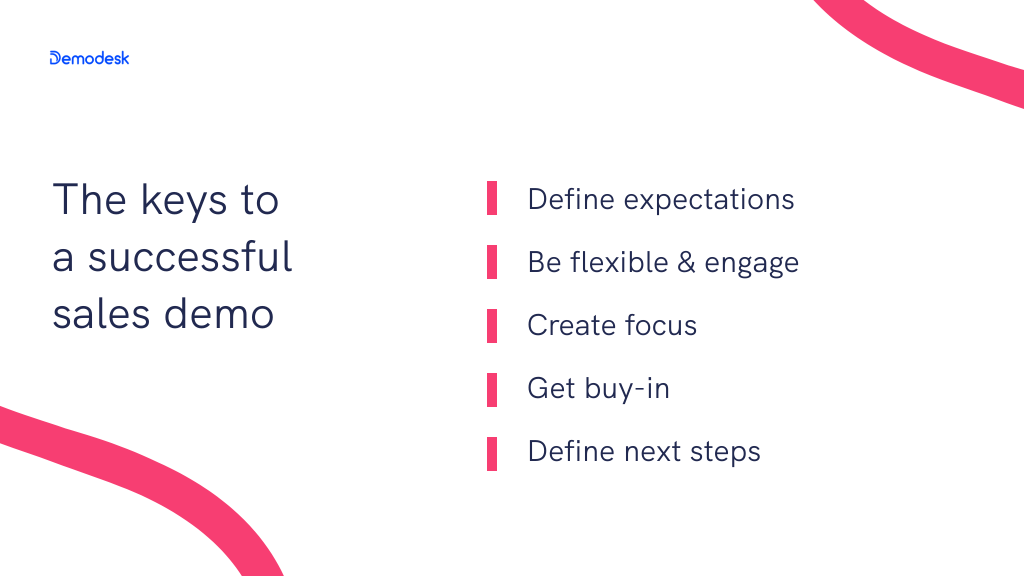
Customizing our sales demo deck template
With all of the important tips to boost sales demos, how do we then visualize everything?
Start by using this sales demo deck template that Sarah and Carlos have put together for you.
If you don’t have a Piktochart account yet, you can create it for free in under 3 minutes.
Let’s dive into the template!
In relation to Carlos’ five keys to a successful demo, we start defining expectations by visualizing the agenda on the template. Outline the agenda and make it easily digestible for your potential customers.

Next, be flexible and engage by showcasing pain points you have identified for the potential customers. This would require some research beforehand.
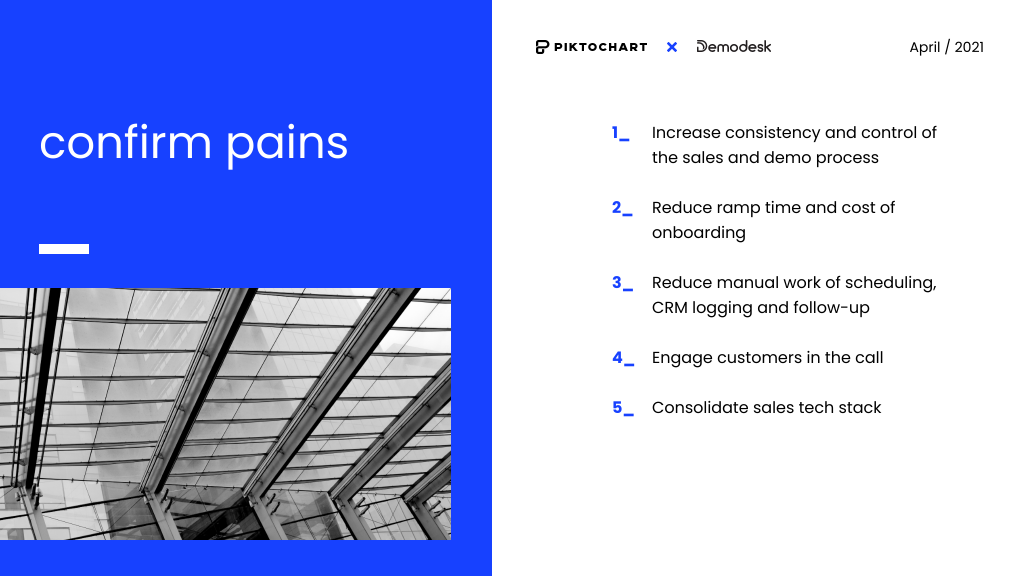
You can then create focus by customizing the template according to your value propositions.
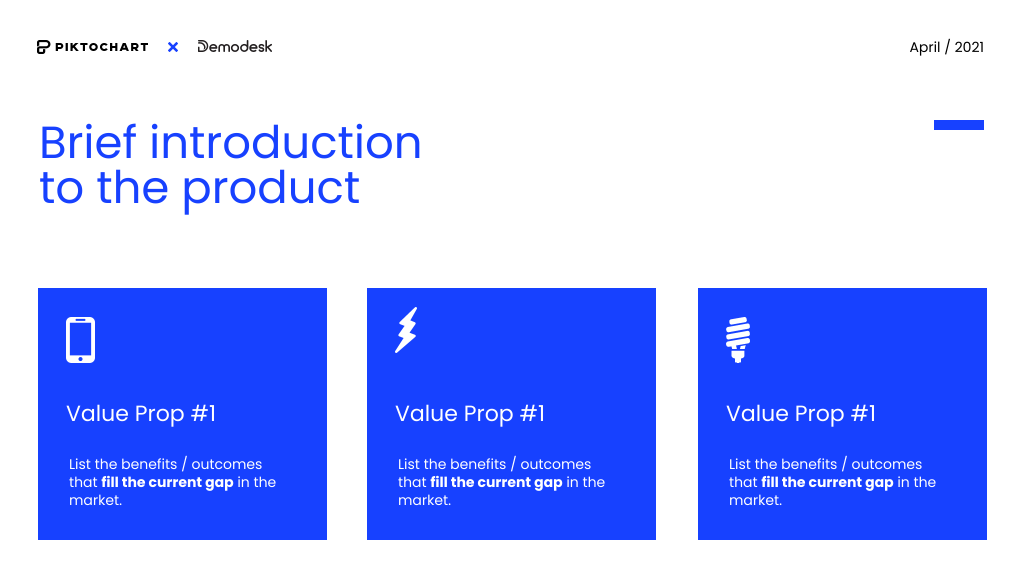
After that, it’s time to get buy-in by expanding into the value propositions that can solve the pain points for your potential customers. This is your opportunity to win their confidence.
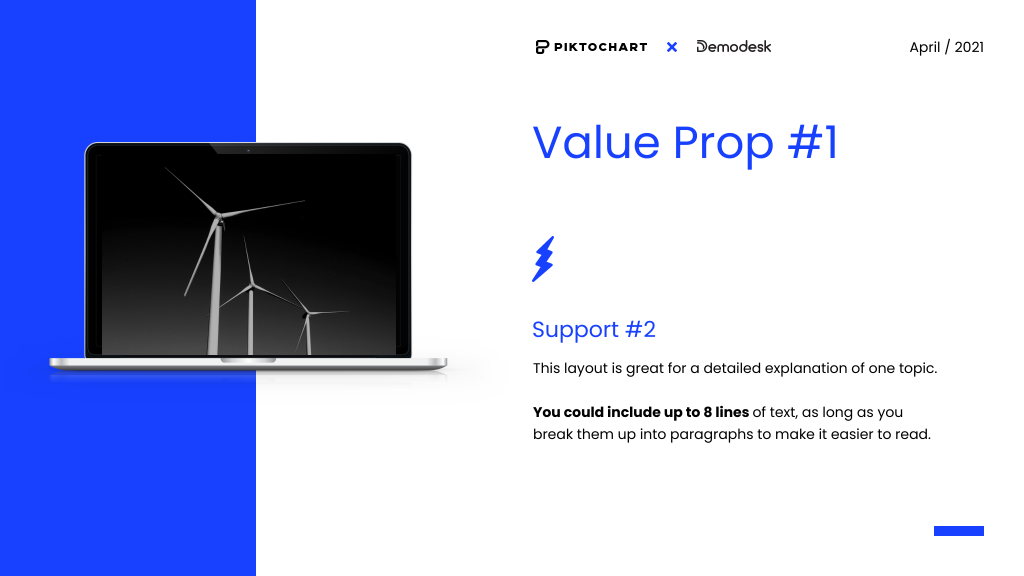
Finally, end the sales demo by defining the next steps. As mentioned by Carlos, this helps to give your potential customers next actionable steps to consider.
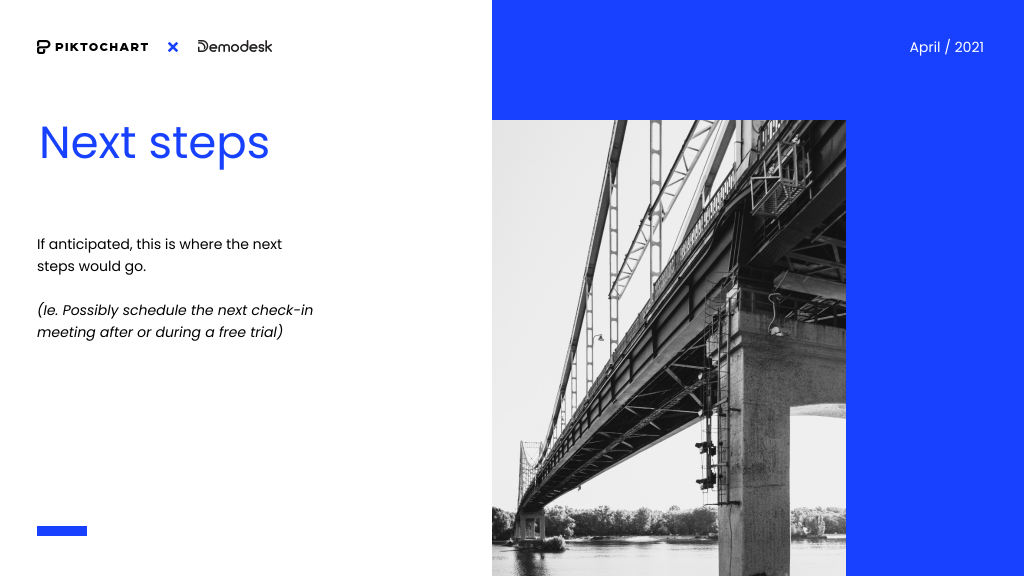
We’ve removed the hard work and made this template easily customizable so you can freely input your content to make it your own!
In addition, Piktochart for Teams allows you to create a standardized template for collaboration within your team. Share your visual work, your brand assets, and review your peers’ work on the fly to keep everyone on the same page.
If you want to follow step-by-step how to make all these changes to the template, check out the second part of the webinar with Demodesk, where Sarah gives a demo of Piktochart.
Now that you have the tips and the right tool to create a professional-looking and convincing sales demo deck, we hope all these help to convert more customers for you.
All the best and happy creating!




